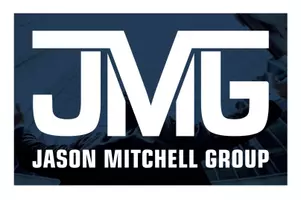Harmony Grove Village South gets the green light: Supervisors back controversial development despite fire safety fears
The San Diego County Board of Supervisors backed the controversial proposed Harmony Grove Village South development outside Escondido on Wednesday, following a years-long battle by neighbors.
The decision could bring to a close a long-running fight over the proposed 450-home development between Escondido and San Marcos, one that’s been punctuated by lawsuits and gets to the heart of the balancing act between protecting residents from wildfire risks and the region’s real need for more housing.
Much of the controversy surrounding Harmony Grove Village South came down to how residents would evacuate the neighborhood in the event of a wildfire.
Tucked just south of state Route 78, the proposed development site sits near two urban areas. But under project plans, only one, two-lane road — County Club Drive — leads in and out of the development.
To expedite any potential evacuation, the project calls for converting part of Country Club Drive into a three-lane bridge running over Escondido Creek. Additional fire mitigation measures in the plan include ignition-resistant construction materials and more fire hydrants.
“The fire code recognizes that not every project can meet every prescriptive requirement,” Ruben Grijalva, a former Calfire director who evaluated the project, told supervisors on Wednesday. “If a project can demonstrate that it’s approach is equally safe or safer, the fire authority has the discretion to approve it. That’s exactly what happened here.”
Over nearly three hours on Wednesday, supervisors heard other testimony for and against the project from the developer, fire experts, labor leaders and residents.
The developer behind the project is RCS Harmony Partners, a subsidiary of Real Capital Solutions, a real estate company owned by billionaire Marcel Arsenault.
In a video played to supervisors, David Kovach, a partner with RCS Harmony Partners, called the project’s fire protection plan the “gold standard,” pointing to sign-off from Calfire, the county fire authority, the sheriff, the Rancho Santa Fe Fire Protection District and two fire safety consulting firms.
“It is nearly impossible to imagine a more qualified team to create and validate this plan,” Kovach said in the video.
Supervisors got further reassurances from some local fire officials on Wednesday.
Dave McQuead, fire chief of the Rancho Santa Fe Fire Protection District, estimated it would take one to two hours to evacuate the area.
All five supervisors voted to green-light the project. Approvals given on Wednesday include the development’s rezoning, site plan, permit and environmental impact report.
Support from the supervisors came with requirements that the future homeowners association of Harmony Grove Village South report to the county once a year on its brush maintenance, as well as with instructions for county staff to explore how a second road leading out of the development could be built.
But nearby residents and others again voiced their concerns Wednesday about the project’s evacuation plan.
Leo Zlimen, CEO of Ladris, which models wildfire evacuation scenarios, showed supervisors computer modeling of a hypothetical wildfire in the area which could trap residents before they’re able to evacuate.
“This a fire that could happen. It’s not an extreme fire scenario,” Zlimen said. “Harmony Grove as it exists today is a poor evacuation scenario.”
Before Wednesday, Harmony Grove Village South faced repeated challenges at a time when other developments in San Diego’s backcountry either were blocked or forced to adapt due to evacuation concerns.
In 2018, a Board of Supervisors controlled by Republicans first approved the development.
That decision kicked off years of legal battles against it led by the Sierra Club.
In 2020, a judge told the county to reverse its decision, finding the project’s fire safety plan insufficient, among other issues. A year later, an appeals court upheld that ruling, citing the development’s lack of carbon emissions mitigation and affordable housing.
Since the project was first approved back in 2018, the developer has sweetened its plans with the inclusion of a small amount of income-restricted housing.
Five percent of the project’s units, about 20, are reserved for lower-income residents, or those who make no more than 80% of the area median income, or $132,400 for a family of four. Another 5% of units are for middle-income residents, or those who make up to 120% of the area median income, or $198,600 for a family of four.
Categories
Recent Posts










GET MORE INFORMATION


